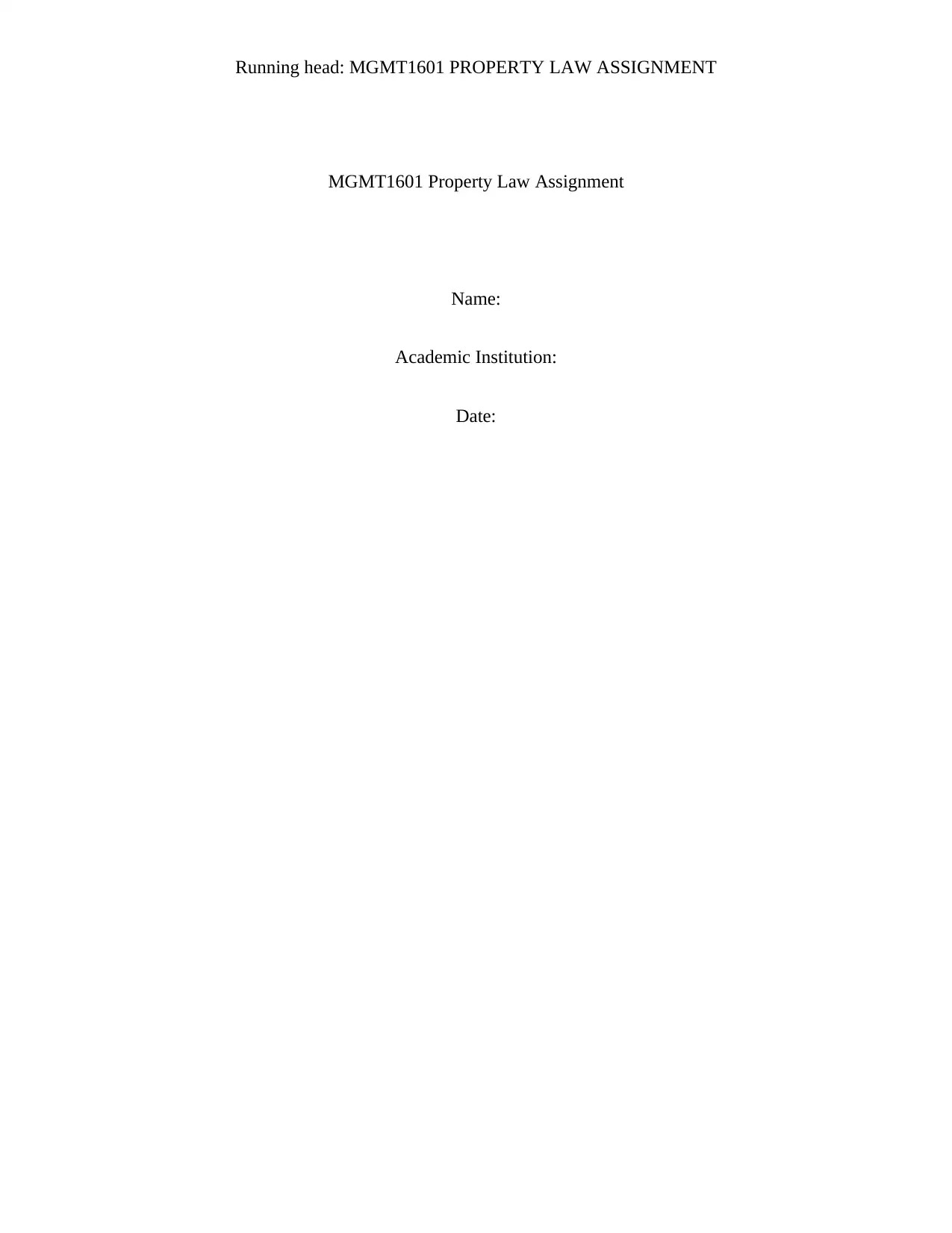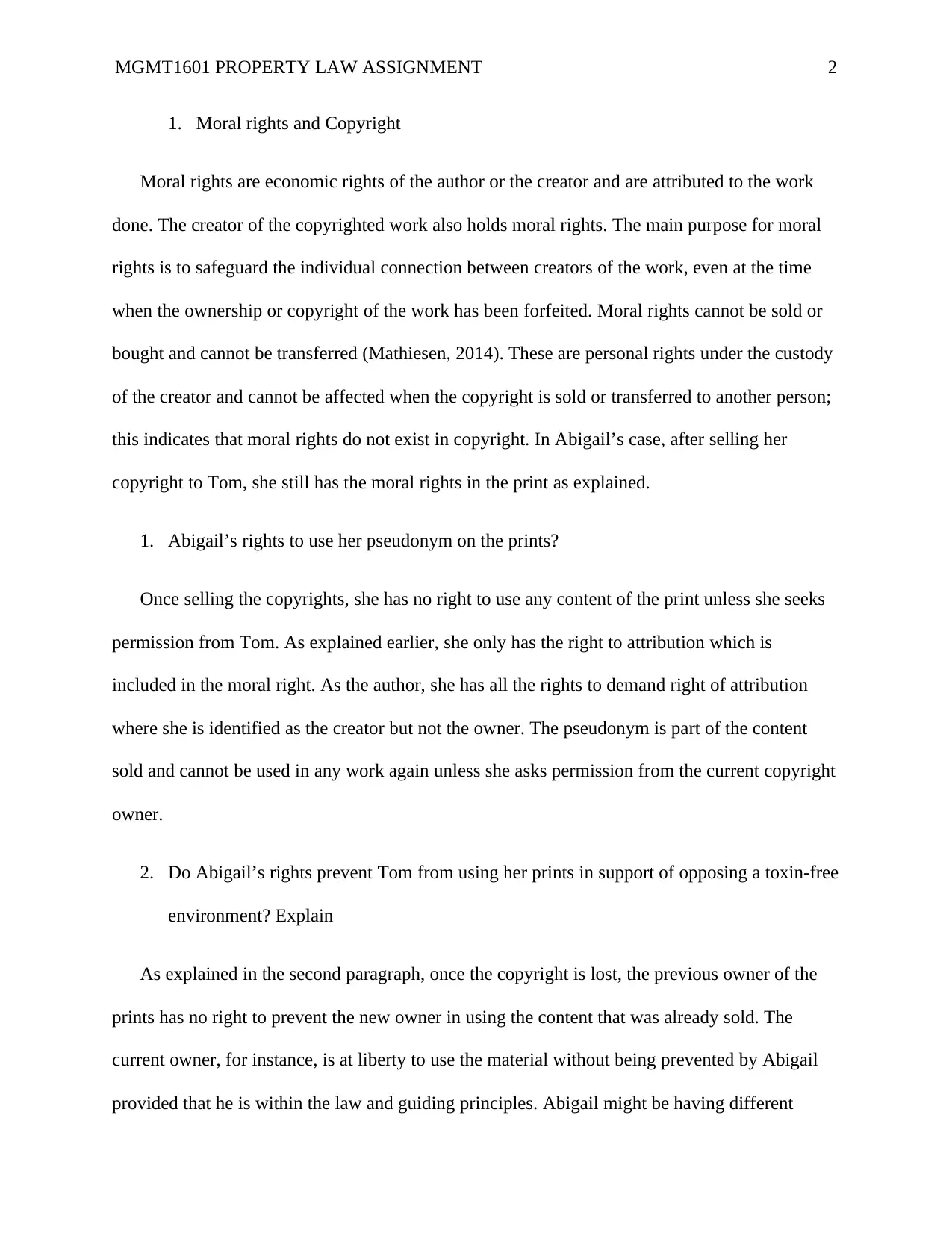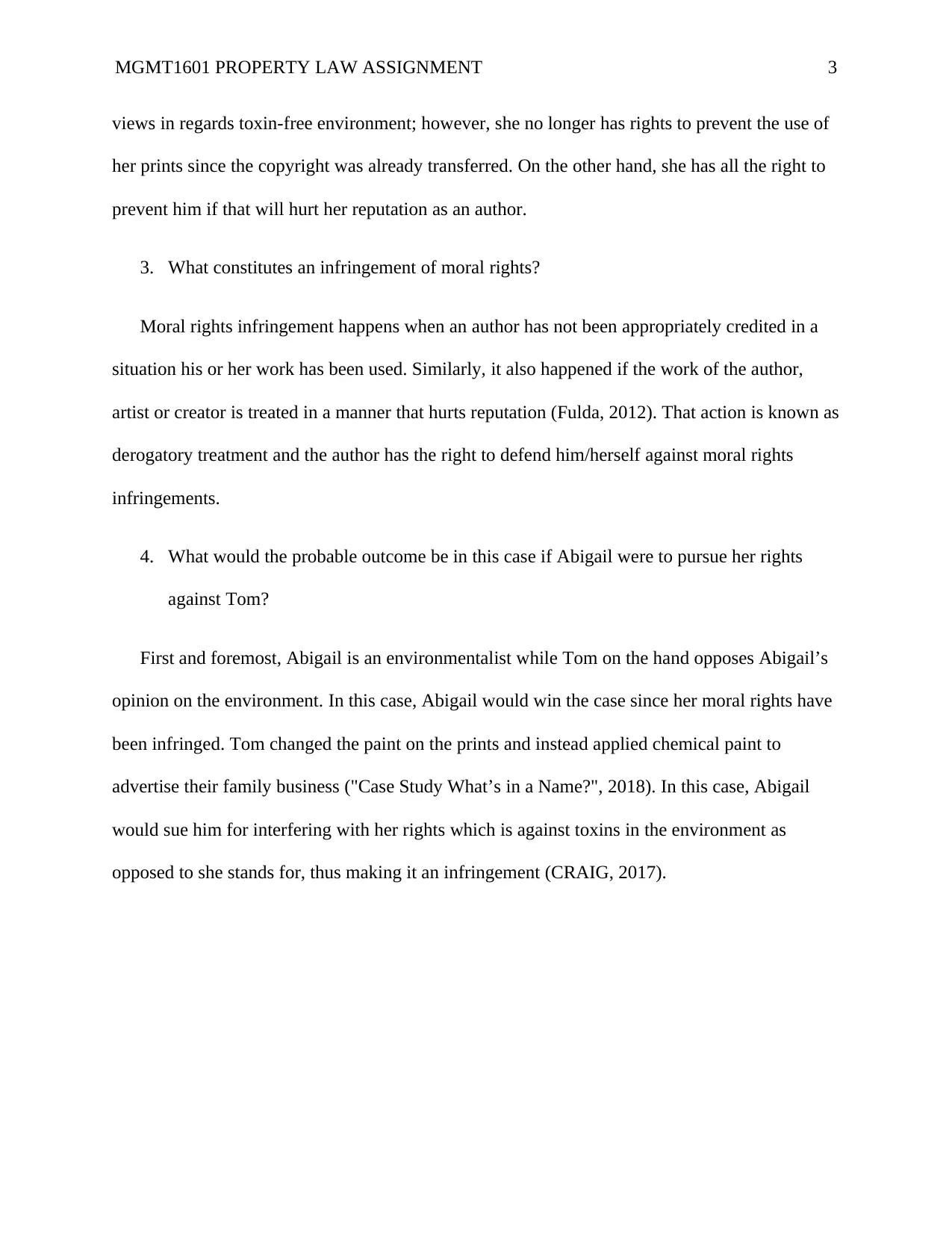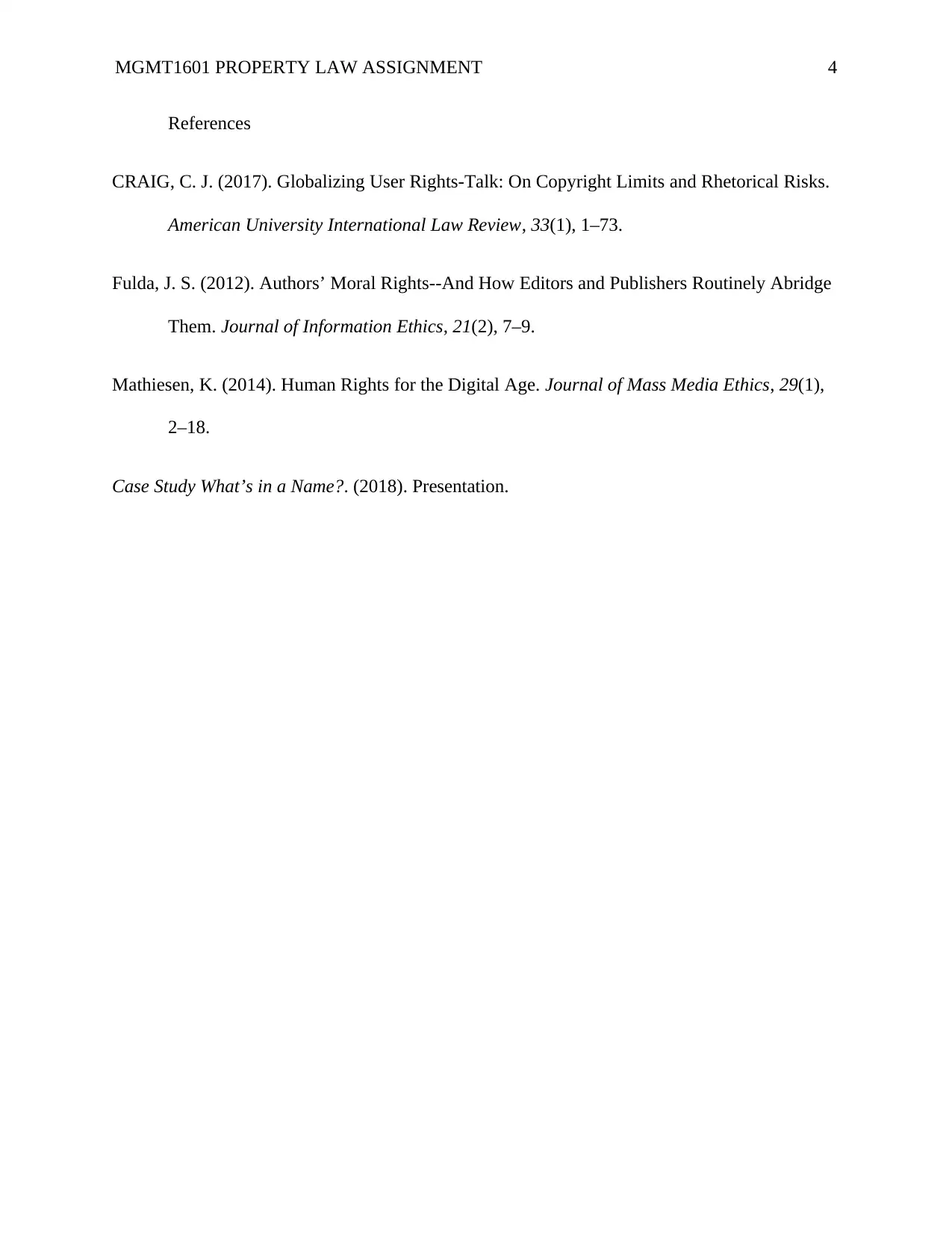Property Law Assignment: Moral Rights and Copyright in MGMT1601
VerifiedAdded on 2021/11/18
|4
|741
|90
Homework Assignment
AI Summary
This assignment solution addresses key concepts in property law, specifically focusing on moral rights and copyright. It examines the rights of creators, including the right to attribution, and how these rights function even after copyright transfer. The assignment explores a case study involving an artist named Abigail, who sells her copyright but retains moral rights. It analyzes Abigail's rights to use her pseudonym, her ability to prevent the new copyright owner from using her work in support of opposing views, and what constitutes infringement of moral rights. The solution concludes with a discussion of the probable outcome if Abigail were to pursue her rights against the new copyright owner, considering the conflict between her environmental views and the use of her work. References are provided to support the analysis.
1 out of 4











![[object Object]](/_next/static/media/star-bottom.7253800d.svg)